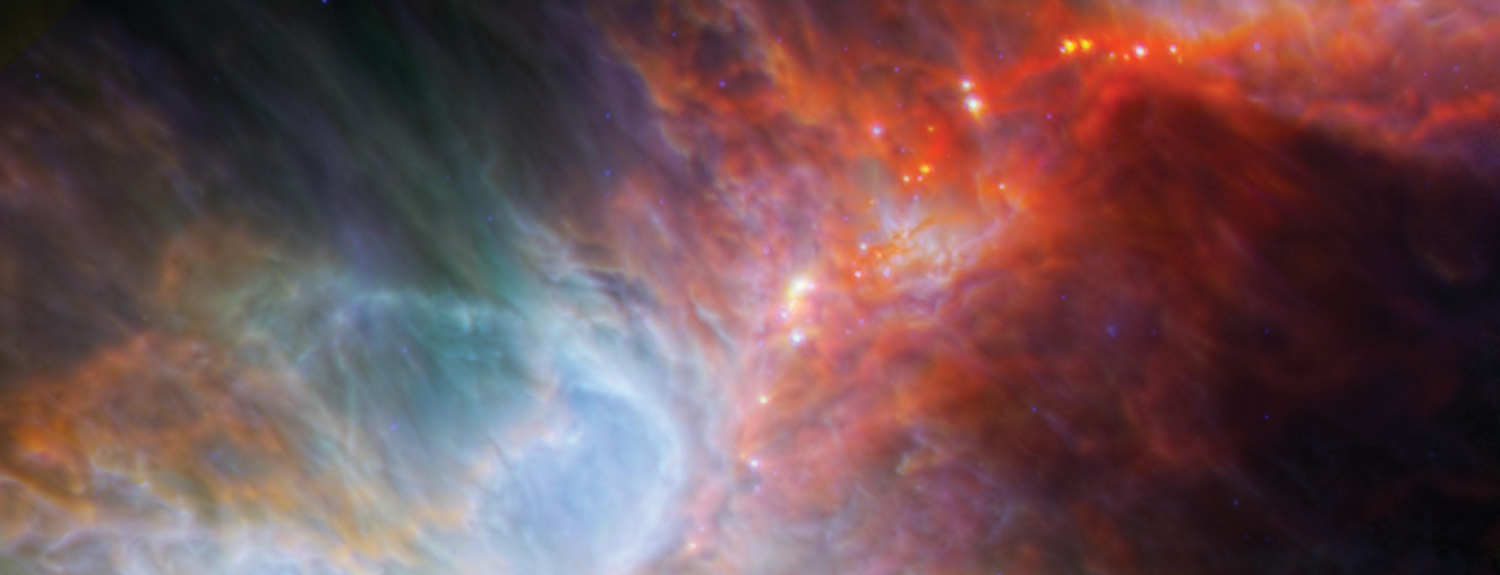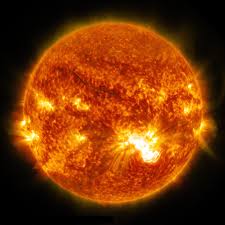
Minnesota Skies: February 2020
Your local guide to observing celestial objects and events
Published01/30/2020 , by Deane Morrison, Thaddeus LaCoursiere & Sarah Komperud
A dazzling evening “star,” Venus comes out in twilight and sticks around long enough to outshine all the real stars against a dark sky. So bright is our sister planet, it has been mistaken for a UFO. Watch it climb in the southwest throughout the month, and be sure to catch it on the 26th and 27th, when a waxing crescent moon appears near it.
The moon takes many partners this month, especially as it tours the group of bright winter constellations now moving onto center stage in the southern sky. On the 3rd, a bright moon crowds the face of Taurus, the bull, and its bright star Aldebaran, the bull’s eye. On the 6th, a fatter moon will shine near the Gemini twins Pollux (the brighter) and Castor.
February’s full moon rises in the late afternoon of the 8th and reaches fullness at 1:33 am on the 9th. This full moon will be quite big and bright, since the moon reaches perigee, its closest approach to Earth in an orbit, only about a day and a half later.
In the morning sky, the three outer planets—Mars, Jupiter and Saturn—are positioning themselves for a spectacular dance in March and early April. All rise in the southeastern predawn sky; Mars first, then Jupiter and finally Saturn, which may be too low to easily see until the last few days of the month. When the three planets are all above the horizon, they will form a nearly straight line, with brilliant Jupiter in the middle.
On the 18th, a thick waning moon passes in front of Mars, making the red planet disappear behind the moon’s illuminated side. Mars may be hard to see next to the moon’s glare, and the time of Mars’s disappearance varies slightly by location. But if you get out by 5:45 a.m. you should be able to watch the event.
On the 2nd, we celebrate an astronomically based Celtic holiday known as Imbolc, or lamb’s milk. It was one of four cross-quarter days falling midway between a solstice and an equinox. It was held that a sunny day predicted cold and continued winter, but a heavily clouded, shadow-free day portended warm spring rains that would soften up the fields for planting. This myth survives in modern Groundhog Day rituals; if the groundhog sees its shadow it means six more weeks of winter, whereas thick clouds mean spring is right around the corner.
Excerpted from Minnesota Starwatch by Deane Morrison, a publication of the Minnesota Institute for Astrophysics at the U of M.
Featured image: Venus shines brilliantly in the subtle pre-dawn glow looking to the East over a small frozen inlet with The Milky Way above, March 18, 2014.
Lunar Highlights
February 1—First Quarter Moon
The Moon is one quarter of its way through its orbit around
the Earth, which makes half the Moon illuminated and half
dark from our perspective.
February 9—Full Moon
The Moon is located on the opposite side of the Earth as the
Sun and the side we see is fully illuminated.
February 15—Last Quarter Moon
This phase occurs when the Moon is three-quarters of the
way through its orbit around the Earth.
February 23—New Moon
The Moon is located on the same side of the Earth as the Sun
and is not visible in the night sky. This is the best time of the
month to observe faint objects like galaxies and star clusters
because there is no moonlight to interfere.
Deep Sky Objects
High above our heads, the magnificent arch of the Milky Way continues to fill the sky, visible for hours each night. The wealth of the Milky Way lies not only in the sight of the entire band, but also what can be found all along the milky road across the sky: open star clusters!
Locating these clusters is a fantastic way to understand the life of stars. In January, we highlighted how to find the Great Orion Nebula, or M42, a star-forming nebula. After stars form in nebulas like M42, their mutual gravitational pull draws large groups of them together. They remain together for a short time before the internal movement of the stars in the cluster and close encounters with other clusters causes the cluster to spread apart. Eventually many of the stars end up isolated. Because that dispersion hasn’t happened yet, when we look at an open cluster, we can see stars of similar ages, chemical compositions, and distances from the Sun. This makes open clusters space laboratories for scientists studying interactions between stars, how different stars evolve, and how the chemistry and structure of galaxies evolve.
The most famous open cluster is easily found high to the south at around 8 pm: the Pleiades—also known as the Seven Sisters or Messier 45. If you’ve never seen it before, start at Orion’s Belt and head upward in the direction the belt points. A hand length away you’ll see a bright red star: Aldebaran. Continue on another hand width to find the Pleiades, looking almost like a small scattering of seeds in the sky, a small dipper, or a question mark. These stars have been traveling around the disc of the Milky Way since they formed around 100 million years ago. They’ve left their parent nebula behind, and the Pleiades is moving through a denser cloud of galactic gas and dust. The haze around the stars is a good target for beginning astrophotographers just learning about long-exposure photography.


